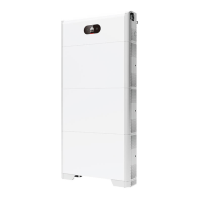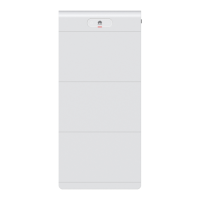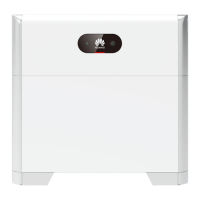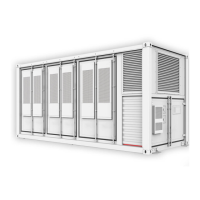Parameter Description Value Range
Working mode Set this parameter to the maximum self-
c
onsumption mode.
● Maximum
self-
consumptio
n
● Time-of-
use
● Fully fed to
grid
Maximum
charge power
(kW)
Retain this parameter to the maximum
charge power. Additional conguration is
not required.
● [0,
Maximum
charge
power]
Maximum
discharge power
(kW)
Retain this parameter to the maximum
discharge power. Additional conguration is
not required.
● [0,
Maximum
discharge
power]
End-of-charge
capacity (%)
Set the charge cuto capacity. 80%–100%
End-of-
discharge
capacity (%)
Set the discharge cuto capacity. 0%–20%
E
xample of Self-Consumption
Examples of self-consumption:
(1) When the sunlight is sucient, the PV module outputs 8 kW power, the
inv
erter outputs 5 kW power, the loads consume 4 kW power, and the batteries
charge 1 kW power.
(2) When the sunlight becomes weak, the PV module outputs 4 kW power, the
inverter outputs 2 kW power, the loads consume 4 kW power, and the batteries
discharge to supply 1 kW power to the loads.
Time-of-Use
● This mode applies to scenarios where the price dierence between peak and
o-peak hours is large.
●
In this mode, Time-of-use is selected. You can manually set the charge and
discharge time segments. For example, you can allow the grid to charge
batteries in low electricity price periods at night and discharge batteries
during high electricity price periods, saving electricity fee. The charge from
grid function must be enabled.
● A maximum of 14 time segments can be set. For details about how to set
charge and discharge parameters, see 6.3 Battery Commissioning.
LUNA2000-(5-30)-S0
User Manual 3 Application Scenarios and Settings
Issue 01 (2020-10-20) Copyright © Huawei Technologies Co., Ltd. 25

